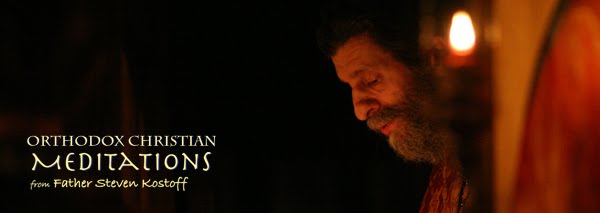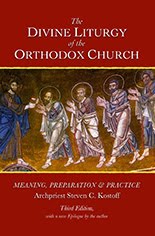You may find this helpful in understanding the unfolding of events in Holy Week and how the four Gospels narrate these events each in a unique manner.
Fr. Steven
TIMING THE PASSION AND HOLY WEEK
Anton C. Vrame, Ph.D., Director
Department of Religious Education
Greek Orthodox Archdiocese of America
Anton C. Vrame, Ph.D., Director
Department of Religious Education
Greek Orthodox Archdiocese of America
As we begin Holy Week, many questions arise about the timing of events. Many of us try to make a direct connection between a particular church service and an event in the Passion narrative. This is not very easy given that readings overlap and the Gospels themselves are not as precise as we would like. For example, the Gospel readings of Holy Thursday morning (the Vesperal liturgy), the Orthros of Holy Friday (Holy Thursday evening), the Vespers of Holy Friday (the Apokathelosis) overlap considerably.
The core of the four Gospels is the story of the Passion and Resurrection of Christ. In fact, these elements comprise the longest sections of the Gospels. However, the Gospels only provide clues to understanding the timing of the events of this week. Ancient Christians, especially those who knew the Jewish community, would have more easily understood the references.
[Webservant's Note: Continue reading the full article in printable PDF format, which includes a convenient table comparing the four Gospel accounts of Christ's passion. To continue without the benefit of the table, simply scroll down for highlights to notice in comparing the four Gospel narratives.]
Some things to notice:
In the Gospel of John, Jesus does not cleanse the Temple after the entry into Jerusalem (Palm Sunday). In John, Jesus cleanses the Temple at the beginning of His ministry (John 2:13-25).
From the time Jesus enters Jerusalem to the time of the Last Supper, in all four Gospels, Jesus is active teaching.
The date of the Jewish Passover fluctuated from year to year, then as it does now. Judaism relies on a lunar calendar. Passover is a spring holiday, so it must take place after the vernal equinox. The 14th of Nisan begins of the night of a full moon after the vernal equinox. According to Jewish Law, the Passover lambs were slaughtered on 14 Nisan at the Temple and the lamb was eaten the next day, with no leavened bread.
One of the great dilemmas of Christianity is discerning whether or not the Last Supper was a Passover meal. Evidence points in both directions. Since no work of any kind could be done during the Passover, Jesus’ trial could not have taken place during the Festival, thus the meal (and the trials) must have been before Passover began (John). Two of the Gospels point to the meal occurring on the same day as when the Passover lambs were slaughtered, not the next day when they would be eaten (thus the meal is not the Passover meal). Details about the meal itself point that it was a Passover meal, for example, the disciples reclined at couches, the meal was eaten in Jerusalem, and the meal took place at night. However, after two millennia there is still no conclusion to this discussion because the evidence is not conclusive one way or the other.
In Matthew, Mark, and Luke, at the Last Supper Jesus institutes the Eucharist (we read that he says, “Take eat, this is my body,” etc.) He does not wash the feet of the disciples. In John, Jesus washes the feet of the disciples, but does not institute the Eucharist as we understand it.
The order of events from the arrest to the crucifixion is the same, although Luke adds the detail of Jesus being taken to Herod.
Given the Jewish reckoning of a day, from sunset to sunset (not our way of reckoning, from midnight to midnight), we can see that Jesus has died during the day on the Day of Preparation (Friday) and is buried at the close of the day, the eve of the Sabbath. On the Sabbath itself, Jesus is in the tomb. The resurrection is on the third day, the first day of the week, Sunday in the morning.
All four Gospels clearly agree upon is that the Empty Tomb is discovered on the first day of the week, Sunday, the day after the Sabbath.








